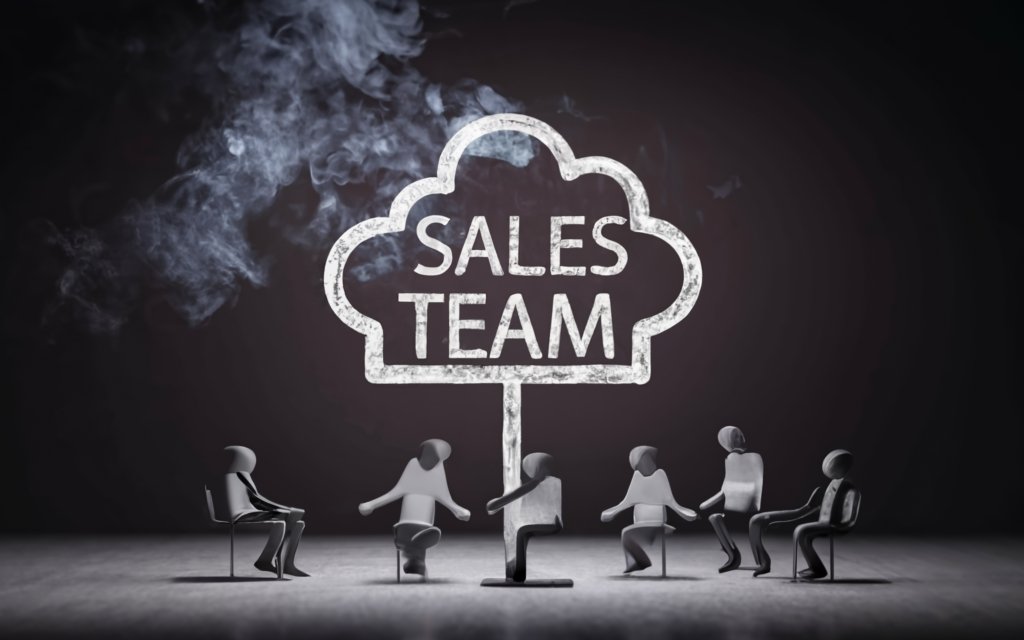Building a talented sales team is the secret sauce for scaling revenue and growth. But between mapping the sales process, structuring the team, hiring superstars, and managing for success, it can seem daunting for any business. This comprehensive guide demystifies how to build a juggernaut sales organization. Learn the must-have roles, recruiting tactics, training regimen, and management techniques to take your sales to the next level. With the strategies outlined here, you will gain the insight needed to develop an elite team that drives results.
Creating an Effective Sales Process
An optimized sales process is the backbone of any high-performing sales organization. Clearly defining and documenting your sales workflow removes bottlenecks, increases efficiency, and sets consistent expectations. Here are some tips for designing a seamless sales process:
Identify Your Target Audience
The first step is getting crystal clear on your ideal customer profile (ICP). Ask yourself:
- Who has the biggest need for your product or service?
- What customer segments drive the most profitability?
- What are the common characteristics of your best customers (size, industry, tech stack etc)?
DOCUMENT your ICP in detail, including buyer demographics, pain points, and motivations for purchase. This will steer your sales and marketing efforts toward qualified prospects only.
For example, a CRM company’s ICP might be medium enterprises with 100-1000 employees, in professional services or manufacturing, looking to scale sales operations and improve data-driven decision making.
Map Out the Buyer’s Journey
Next, map the typical progression a buyer takes from initial interest through becoming a customer. This is called the buyer’s journey and may include stages like:
- Awareness – Prospect learns about your brand
- Consideration – Prospect evaluates solutions and options
- Decision – Final deliberations on whether to proceed
- Purchase – Quote, contract, and payment
- Implementation – Onboarding and setup
- Growth – Account expansion and renewal
At each step of the journey, document what activities drive progression to the next phase. For instance, activities during the consideration phase may include sending product spec sheets, scheduling demos, contacting references, etc.
Mapping the sales workflow to the buyer journey will prevent leads from stalling and ensure smooth hand-offs between your sales development, sales operations, and customer success teams.
Set Clear Guidelines and Expectations
The final aspect is establishing well-defined guidelines for how leads will flow through each part of your sales process. Some best practices include:
- Document procedures for each sales activity (cold calls, demos, proposals etc)
- Outline lead scoring criteria and quotas for each role
- Set policies for hand-offs between roles (SDR->AE)
- Standardize tools and systems used (CRM, email, etc)
- Create playbooks and sample scripts as training resources
- Set SLAs around lead response timelines
- Establish oversight model (team meetings, 1:1s, reporting)
By removing ambiguity at each stage of the process, you will accelerate deal cycles, reduce miscommunications, and streamline your sales operation.
According to Salesforce, 37% of sales teams with well-defined processes exceed their sales quotas. Clearly outline how leads will progress through your sales funnel and establish guidelines and expectations for your team to follow. This will optimize workflow efficiency and boost your sales performance.

Hiring the Right People for Your Sales Team
Hiring exceptional sales talent is one of the most important investments you can make. Taking the time to recruit candidates with the right attributes and compensate them fairly will pay dividends in the form of increased revenue and lower turnover. Here are some tips:
Look for Key Sales Skills and Traits
First, get very clear on the sales skills and intrinsic traits that make someone successful in your particular market. Some to look for include:
- Communication: Can they persuade and establish rapport quickly?
- Resilience: Do they handle rejection well and learn from failures?
- Curiosity: Are they inclined to ask thoughtful questions and truly understand needs?
- Motivation: Are they self-driven to go above and beyond to hit goals?
- Emotional intelligence: Can they read people and situations accurately?
- Time management: Are they organized and productive without micromanagement?
You can assess for these competencies through behavioral interview questions, role playing exercises, and testing. Taking the time to vet candidates thoroughly will ensure you have a team equipped with the “must-have” abilities to excel.
Use a Structured Interview Process
Establish a consistent structure for screening and evaluating candidates across roles. Steps may include:
- Initial phone screen with recruiter
- Completion of sales skills assessments
- Panel interview with sales manager and team members
- Role playing exercises like mock sales calls
- Final interview with sales operations or finance Creating a standardized sequence allows you to gather diverse perspectives and compare candidates objectively. Use scorecards to rate prospects consistently on key factors. You can then make data-driven hiring decisions, confident that candidates have undergone rigorous assessment.
Offer Competitive Compensation Packages
To attract A-players, your compensation packages need to be on par with industry norms and averages. Be sure to research sales pay benchmarks for your geography and offer:
- Base salary aligned to role level
- Commission or incentive structures
- Benefits like health insurance, retirement plans, and PTO
- Allowances for professional development
Sales can be grueling, so offering compelling earnings potential and stability attracts the best. According to LinkedIn, 58% of salespeople say compensation is a top factor in job search. Go above and beyond to reward your team.
With the right hiring process, assessing for must-have sales attributes, and attractive pay, you will assemble a sales force poised to drive incredible growth. Do not cut corners in recruitment – your sales talent is the engine that will take your company to the next level.

Onboarding and Training Your Sales Team
The most successful sales teams never stop learning. A robust training program levels up your team’s skills and keeps them performing at peak levels. Here are some best practices:
Provide Extensive Product/Service Training
Start by ensuring your team has in-depth knowledge of what you are selling. Well-informed reps build credibility with prospects and can convey value clearly. Training may cover:
- Product/service capabilities, features, and benefits
- Ideal customer profiles and use cases
- Common pain points solved
- Competitor differentiation
- Pricing and licensing models
- Technical inner workings (how it works)
- Roadmap and future releases
You can deliver training through presentations, demos, interactive modules, videos, and more. Well-versed reps gain confidence, handle objections better, and accelerate deal cycles.
Set Clear Individual and Team Goals
Each rep should have clearly defined monthly, quarterly, and annual quotas tailored to their segment or territory. Setting measurable goals helps reps stay focused and motivated. Best practices include:
- Base targets on historical performance and growth projections
- Establish team goals in addition to individual goals
- Put quotas in writing and have reps formally commit
- Train reps on tracking and reporting progress
- Conduct quarterly business reviews on goal achievement
With concrete metrics in place, managers can identify high and low performers and coach accordingly. Reps also can see how top teammates structure their sales activities to replicate success.
Conduct Regular Skill Development Training
Beyond product knowledge, reps need to continuously refine core sales skills – communication, objection handling, negotiating, presenting, lead generation, and more.
Schedule weekly or bi-weekly team sales training on essential topics, and track development through role playing and observation. Useful sessions may cover:
- Delivering value-focused sales pitches
- Writing effective sales emails
- Responding to pricing objections
- Uncovering hidden needs through questioning
- Reading body language on sales calls
- Leveraging social proof and referrals
According to research from Richardson, companies with formal sales training have on average 10% higher win rates. A continuous training program keeps your team honing their craft.
Additionally, you can offer stipends for reps to invest in their own professional development through conferences, online courses, and certifications. A knowledgeable, well-trained sales team will outperform the competition every time.
Managing Your Sales Team for Success
Sales management is both an art and a science. Beyond just tracking metrics, great sales leaders develop positive culture, break down silos, provide mentorship, and lead by example. Here are some tips:
Foster Open Communication and Collaboration
Sales teams function best when information flows freely. Promote transparency by:
- Holding weekly team stand-up meetings for sharing progress and surfacing blockers
- Maintaining an open door policy for reps to voice concerns
- Cultivating culture where asking for help and collaborating is encouraged
- Celebrating team achievements rather than focusing solely on individual contributors
- Facilitating regular cross-departmental meetings with support teams like marketing, product, etc
According to Harvard Business Review, companies that promote collaboration achieve five times higher sales growth than their competitors. Enable cooperation through your management approach.
Analyze Performance Metrics Regularly
Leverage your CRM and sales tools to generate reports on:
- Overall revenue attainment vs quotas
- Revenue retention and churn rate
- Sales activity levels (calls made, emails sent, demos scheduled)
- Average sales cycle length
- Lead conversion rates by source
- Win rates by opportunity size, sales stage, industry
Analyze metrics at least weekly or monthly to find optimization opportunities. Be proactive addressing warning signs like declining activity levels or elongated sales cycles. According to Aberdeen Group, best-in-class sales teams are 85% more likely to rely heavily on reporting insights. Data sheds light on what is and isn’t working.
Provide Ongoing Support and Feedback
Reps need consistent coaching to reach their potential. Dedicate time for:
- Weekly 1:1s to review activity, pipeline, and identify areas for growth
- Call reviews to provide feedback on pitch delivery, objection handling, etc
- Quarterly performance reviews with written feedback on strengths and development needs
- Sitting in on live sales calls and providing real-time guidance as needed
- Connecting lower performers with top peers for mentorship
According to research from Brainshark, reps receiving regular coaching improve win rates by 17% on average. Guidance and support boosts capability across your team.
By promoting transparency, leveraging data, and providing hands-on guidance, you amplify the productivity of your sales force. Invest time developing the soft skills of leadership while also maintaining diligence tracking hard numbers. This balanced approach drives team growth and retention.

Motivating and Retaining Your Top Sales Talent
With the high stress and demands of sales, turnover is an unfortunate reality. However, you can boost retention of your superstar reps by fostering an engaging work environment and providing development opportunities.
Offer Opportunities for Career Progression
Ambitious salespeople want to continuously develop new skills and expand their responsibilities. Offer clear paths for promotion by:
- Outlining the competencies required to advance to the next level
- Providing training and assignments that prepare reps for more senior roles
- Being transparent about open management positions and the application process
- Promoting internally when possible to reinforce growth potential
- Considering high performers for leadership development programs
According to LinkedIn’s Global Talent Trends report, 94% of employees say opportunities to learn and grow are top reasons for staying in a job. Enable professional growth and many reps will stick around long-term.
Maintain a Positive and Supportive Culture
Beyond career progression, the overall work environment hugely impacts retention. Foster positivity by:
- Leading with empathy and emotional intelligence
- Celebrating team wins frequently
- Promoting camaraderie through team bonding activities
- Maintaining open dialogue around enhancing culture
- Acting decisively if any toxic behaviors emerge
- Providing support during setbacks or rejected deals
Research by Achievers found that reps are 75% more likely to stay at companies with strong culture. Take steps to cultivate a great work atmosphere.
Provide Meaningful Incentives and Rewards
Sales can be draining, so create incentives that make the effort worthwhile. Possible options include:
- Offsite retreats for top teams
- Spot bonuses for landing major accounts
- Extra PTO
- Gift cards or luxury items
- Public recognition at company meetings
- Company equity
A study published in the Harvard Business Review found that employees who feel progress through consistent small wins perform 20% better. Reward standout performances to motivate.
With engaged employees who see a future with your company, retention will exceed benchmarks. Remember, your team is your most valuable asset – invest in their growth, happiness, and wellbeing.

Continuously Optimizing Your Sales Process
The most successful sales organizations are never satisfied with the status quo. They constantly gather insights, run experiments, and evolve their processes to improve performance. Here are some best practices:
Gather Regular Feedback from Your Team
Your sales reps engage with prospects and customers daily. Tap into their experiences by:
- Debriefing on lost deals to understand why buyers chose another solution
- Soliciting input on current inefficiencies in the sales process
- Encouraging suggestions on better equipping reps to sell
- Asking for feedback after training sessions and onboarding
- Regular roundtable discussions on enhancing culture
Dedicate time during team meetings or manager 1:1s for two-way dialogue around improvement opportunities. According to Gong.io, 77% of high-performing teams receive feedback at least weekly. Listening to your team will reveal ways to improve.
Experiment with New Strategies and Tools
Be willing to pilot changes that may optimize your process. Some ideas are:
- Testing new scripts or value propositions
- Leveraging different lead generation approaches
- Changing criteria for lead scoring or hand-offs
- Adjusting team structures or territories
- Implementing sales engagement tools like GMass Chrome Extension for automating outreach
- Revising compensation plans
Measure the impact of changes before rolling them out fully. Salesforce found that high-performing teams are 36% more likely to be early adopters of new sales technologies. Don’t fear trying new approaches.
Adapt to Evolving Buyer Behaviors and Preferences
As your customers change, ensure your process aligns with their buying journey. Stay on top of market trends and adjust as needed by:
- Monitoring your win/loss ratio – are more prospects choosing competitors?
- Incorporating new outreach channels prospects prefer
- Shortening or lengthening sales cycles based on data
- Identifying unmet needs based on customer feedback
- Providing sales tools reps request to close deals faster
According to McKinsey, B2B buyers now favor remote interactions over face-to-face meetings. Adapt your sales methodology to evolving preferences.
By continuously surfacing opportunities for improvement, testing new approaches, and realigning with buyer needs, you drive better sales outcomes. Optimizing your sales process is not a one-time initiative but rather an ingrained mindset within your culture.
Key Takeaways
Building an elite sales team takes work, but the payoff in increased revenue and growth is immense. Here are some key lessons:
- Invest in sales talent. Their skills directly impact your bottom line. Structure the team to cover the entire sales cycle from leads to retention.
- Create a seamless sales process tailored to your customers’ journey. Outline each step clearly to optimize workflow efficiency.
- Hire salespeople with resilience, motivation, and emotional intelligence. Assess candidates thoroughly with interviews, testing, and exercises.
- Train constantly. Product knowledge, core sales skills, and goals mastery ensure reps stay sharp.
- Manage with transparency and nurture culture. Foster collaboration and leverage data to improve.
- Develop and reward top performers. Provide career progression, great culture, and meaningful incentives to retain A-players.
- Continuously gather feedback and optimize. Experiment, adapt, and realign your process with evolving buyer needs.
With the right sales team structure, hiring process, training regimen, and management approach, you will boost revenue, retention, and market share. Use these tips to build a high-octane sales machine.
Frequently Asked Questions
Here are some common questions around building a high-performing sales team:
Q: How big should my sales team be?
A: Your sales team size should align with your revenue targets and growth plans. Factor in sales cycles, quota per rep, and market size. Build out the core roles first, then expand as needed.
Q: Should I hire experienced or entry-level sales reps?
A: Strive for a mix. Veteran reps ramp up faster but entry-level can be trained in your process. Have senior reps mentor high-potential junior members.
Q: How should sales reps be compensated?
A: Structure compensation around a base salary plus performance incentives. Quotas, commission percentage, and bonuses should motivate reps to go the extra mile.
Q: How often should sales reps be coached?
A: Frequent coaching drives improvement. Schedule weekly call reviews and quarterly performance evaluations at minimum. Top teams receive continual feedback.
Q: What sales methodology is best?
A: There is no one-size-fits-all approach. Choose a proven framework like SPIN selling and adapt it to your process. Continuously test new methodologies as well.
Q: When should I fire an underperforming sales rep?
A: First have an open conversation on why expectations are not being met and create a performance improvement plan. Part ways if metrics do not improve within a quarter.
Q: What sales tools are most important?
A: A CRM for pipeline visibility, email tools like GMass for outreach, and analytics for data-driven decisions. Leverage sales enablement technology.

